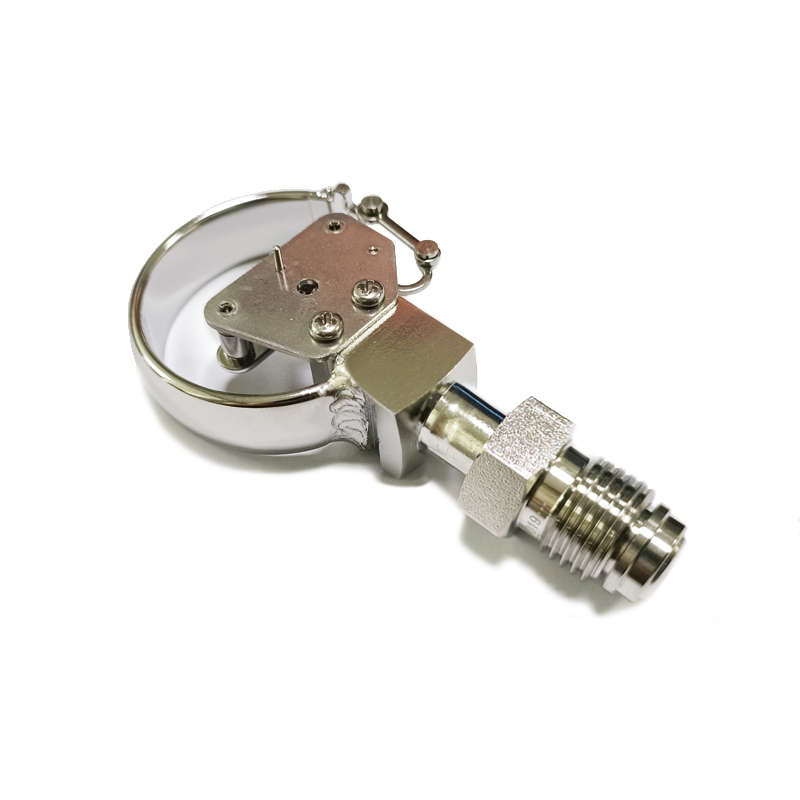
Oct . 22, 2024 09:28 Back to list
China Diaphragm Seal for Differential Pressure Gauge Applications and Benefits
Understanding the China Diaphragm Seal Differential Pressure Gauge
The diaphragm seal differential pressure gauge is an essential instrument in various industrial applications, especially within the oil, gas, and chemical sectors. Its primary function is to measure the pressure difference between two points in a process system, providing critical data for monitoring and control. In this article, we will explore the features, advantages, applications, and maintenance aspects of diaphragm seal differential pressure gauges, with a focus on those manufactured in China.
What is a Diaphragm Seal Differential Pressure Gauge?
At its core, a diaphragm seal differential pressure gauge consists of two main components a differential pressure gauge and a diaphragm seal. The diaphragm seal acts as a barrier between the process fluid and the measuring element. This design protects the gauge from harsh or corrosive fluids, making it an ideal solution for applications involving viscous, abrasive, or corrosive materials.
The diaphragm responds to pressure changes from both sides, and this movement is translated into a readable measurement on the gauge. The design ensures that the pressure is accurately transmitted while protecting sensitive internal components from the effects of the process fluid.
Features of Diaphragm Seal Differential Pressure Gauges
Diaphragm seal differential pressure gauges come with several features that enhance their performance. Key features include
1. Material Options Manufacturers often provide various material options for the diaphragm, including stainless steel, Hastelloy, and PTFE. This versatility allows users to select the right material based on the nature of the process fluid and environmental conditions.
2. Range of Measurement These gauges can measure a wide range of pressure differentials, making them suitable for various applications, from low to high-pressure scenarios.
3. Zero Adjustment Many diaphragm seal gauges come with the option for zero adjustment, allowing operators to calibrate the device easily to ensure accurate readings.
4. Temperature Resistance Designed to withstand extreme temperatures, these gauges can function in both high and low-temperature environments, with some models resistant to fluctuations in temperature.
5. Easy Installation and Maintenance Diaphragm seal gauges typically feature user-friendly designs for straightforward installation and maintenance. This ensures minimal downtime and optimal operation in industrial settings.
Advantages of Using Diaphragm Seal Differential Pressure Gauges
These gauges offer several advantages
- Protection Against Corrosion The diaphragm seal protects the gauge from corrosive media, which helps prolong the life of the instrument and enhances reliability
.- Improved Accuracy The design minimizes the impact of pulsation and vibration from the process fluid, leading to more accurate readings.
china diaphragm seal differential pressure gauge

- Versatility Suitable for various applications, they can measure the pressure difference in liquids, gases, and slurries.
- Reduced Maintenance With fewer exposed internal components, diaphragm seal differential pressure gauges typically require less maintenance compared to standard gauges.
Applications
The diaphragm seal differential pressure gauge finds applications in
- Petrochemical Industry Used for monitoring pressure differentials in distillation columns, reactors, and various processes involving volatile compounds.
- Water and Wastewater Treatment Essential for measuring pressure drops across filters and membranes.
- Pharmaceutical Manufacturing Provides crucial data for ensuring safe and effective processes in the production of drugs and medications.
- Food and Beverage Sector Helps control processes by measuring pressure differentials in systems involving liquids and gases.
Maintenance Considerations
To ensure the longevity and accuracy of a diaphragm seal differential pressure gauge, regular maintenance is essential. Users should
1. Inspect for Damage Regularly check the diaphragm for any signs of wear or damage and replace it as necessary.
2. Calibrate Periodically Conduct calibration checks to ensure the accuracy of readings, especially after significant process changes or maintenance activities.
3. Clean and Flush If the process allows, periodically clean the diaphragm seal to prevent clogging and buildup that could impair function.
4. Monitor Environmental Conditions Keep track of temperature and pressure conditions to ensure the gauge operates within its specified limits.
Conclusion
In summary, the diaphragm seal differential pressure gauge is a crucial instrument in many industrial processes, particularly for those dealing with challenging fluids. The protective features, accuracy, and versatility make it a preferred choice in various sectors. With proper selection, installation, and maintenance, these gauges can provide reliable performance for years, ensuring the efficiency and safety of industrial operations.
-
High-Precision Mass Diaphragm Pressure Gauge - Reliable & Durable Solutions
NewsJun.10,2025
-
Explain Diaphragm Pressure Gauge Expert Guide, Top Manufacturers & Quotes
NewsJun.10,2025
-
Affordable Differential Pressure Gauge Prices in China Top Manufacturers
NewsJun.10,2025
-
Reliable Water Fire Extinguisher Pressure Gauges for Safety
NewsJun.10,2025
-
Durable Diaphragm Protection Pressure Gauges Get Quote
NewsJun.09,2025
-
WIKA Differential Pressure Gauge with Switch Reliable Monitoring & Control
NewsJun.09,2025
